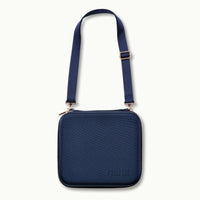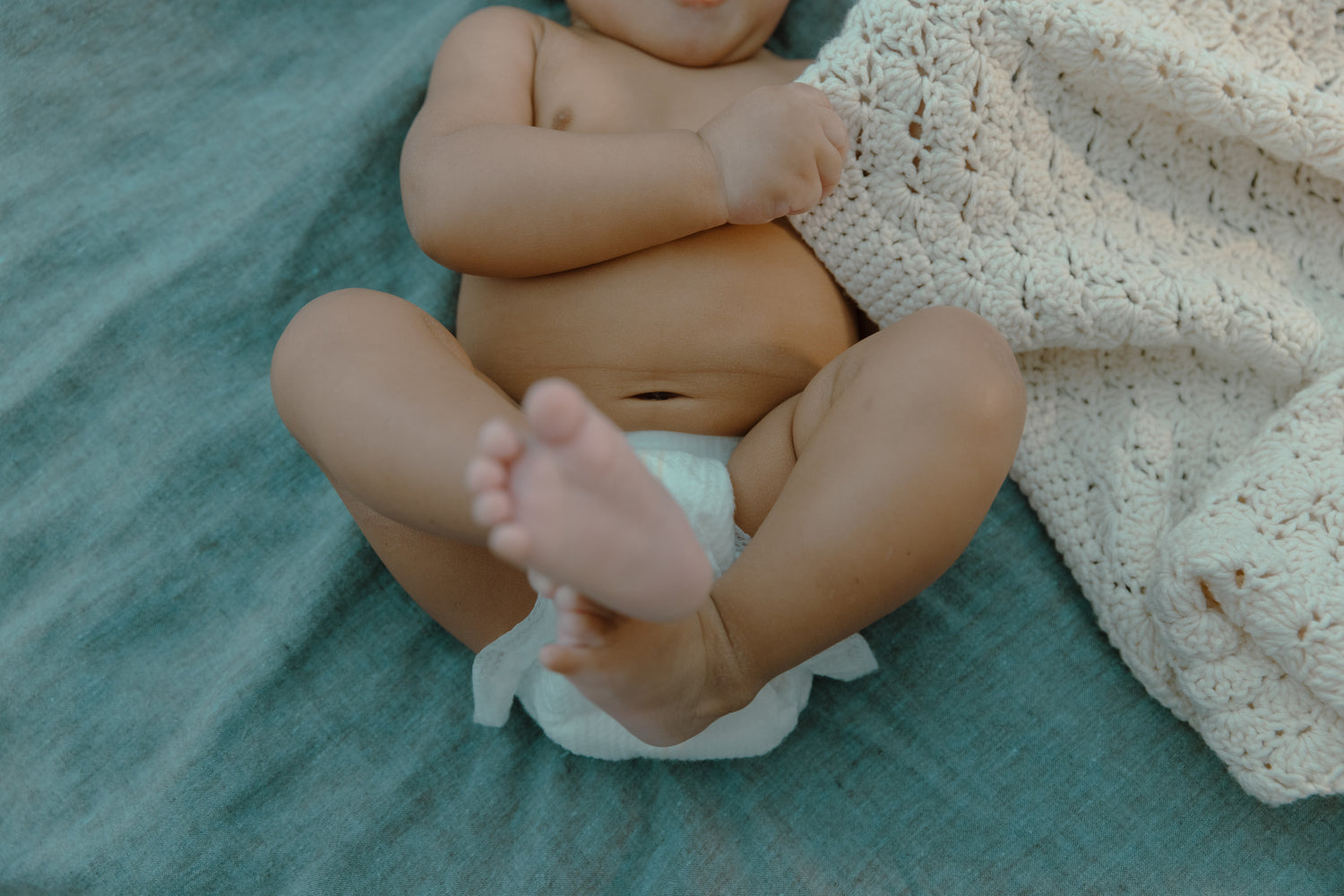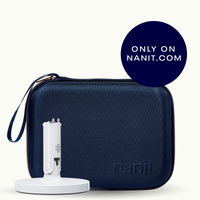Learn how to manage nighttime and daytime diaper changes without disrupting your baby's sleep. Explore our tips to parent confidently through the night.
How Often Should You Change Your Baby’s Diaper at Night?
Sleep comes at a premium for you as a parent and for your baby. That’s why you might find yourself asking this question in the middle of the night: Do I need to do a nighttime diaper change for my baby right now?
During the day, it is generally a straightforward question. But at night, it’s slightly more complicated. On one hand, your little one may have a soiled diaper while sleeping (it’s more than likely to happen at least once per night). And on the other hand, you don’t want to wake them unnecessarily to change them. So if your baby is still asleep, should you risk waking them to change into a clean diaper?
When to Skip the Nighttime Diaper Change
If your baby is sleeping at night, unless they have a poppy diaper or are extremely wet, you can probably let them sleep. Many of today’s diapers are so absorbent that your baby may be able to sleep through the night, or as long as they’re capable, even if they’ve wetted or soiled a diaper. When they wake up on their own, or you need to wake them for a feeding, you’ll have a chance to clean them up and put on a fresh diaper. Until then, you can probably rest easy.
Now I know what you’re thinking, “Okay, I get that I don’t need to change my baby’s dirty diaper every single time they wet it in the middle of the night, but what about when I do need to change them at night? What then? And can you tell me in an easily digestible listicle format?” Well, that’s an oddly specific request, but don’t worry, we’ve got you covered.
Nighttime Diaper Changes — How to Get in and out Without Disrupting Sleep
Every time you interact with your baby, you naturally want to maximize bonding time. And changing diapers, believe it or not, presents a wonderful bonding opportunity.
Turning your head away in disgust to get it over with as quickly as possible isn’t what we mean. We know that diaper changes are often a time for eye contact, singing, tummy raspberries, or finding creative ways to make the experience fun. These moments help strengthen your connection and foster a sense of trust with your baby.
But that’s actually exactly how not to change a diaper in the middle of the night.
Age and Sleep Pattern Considerations for Nighttime Diaper Changes
When deciding whether to change your baby’s diaper during the night, their age and sleep patterns play a significant role. Newborns, for instance, tend to have irregular sleep cycles and frequent feedings, making diaper changes a more common part of nighttime care. In contrast, older babies who have established longer sleep stretches may not require as many overnight changes, especially if they are in high-absorbency diapers.
If your baby is waking up multiple times a night, it might be a good opportunity to check their diaper during those moments to prevent leaks or discomfort. However, if your baby is sleeping soundly for extended periods, you can often let them rest unless they’re visibly uncomfortable or their diaper is very soiled.
Understanding your baby’s unique sleep patterns and adjusting your approach as they grow can help both of you get more restful nights while maintaining their comfort and hygiene.
Daytime Diaper Changes: Keeping Up with Your Baby’s Needs
As the sun rises, so does the frequency of diaper checks and changes. Active days mean more opportunities for your baby to eat, drink, and, inevitably, soil their diaper. Unlike the strategic minimalism of night, the day calls for proactive and frequent diaper changes to prevent irritation and ensure your little one stays happy.
How Often Should You Change a Baby’s Diaper During the Day?
You should aim to check your baby's diaper every 2-3 hours. Soiled diapers should be changed promptly to maintain your baby’s hygiene and avoid discomfort or the development of a diaper rash, especially for babies with sensitive skin.
Additional Considerations for Diaper Changes
Meeting your baby’s diapering needs day and night ensures their comfort and well-being. Stay mindful of factors like:
- Cloth vs. Disposable Diapers: The choice between cloth diapers and disposable diapers can influence how often you need to change. Cloth diapers, while eco-friendly, may require more frequent changes due to their less absorbent nature. Modern disposable diapers often include advanced moisture-wicking and odor-controlling features, allowing for slightly longer intervals without compromising comfort or hygiene.
- Weather Conditions: Hot or humid days can accelerate discomfort, so breathable materials and regular changes become even more important to keep your baby cool and comfortable.
- Snug Fit for Active Babies: A snug fit is crucial to prevent leaks and blowouts, especially during active play. Adjusting diaper sizes as your baby grows ensures a better fit and more effective protection.
Daytime diaper changes are about balancing hygiene, comfort, and practicality. By proactively addressing your baby’s needs, you can keep them clean, dry, and content throughout all their daily adventures.
Five tips for more effortless diaper changes
-
Establish a Routine
Routines are great when it comes to babies. Babies like routines because it comforts them, Will Wilkoff, M.D, a Maine pediatrician , tells Parenting. And parents like them because routines help set the foundation that there are certain rules to follow. Newer baby monitors like Nanit even track your baby’s sleep and let you know when your bedtime routine is becoming inconsistent, as this can result in more sleepless nights for you and your child.
You may think that because your diaper change routine during the day involves eye contact and general playfulness, you should maintain the same routine at night. You can do that, but expect your baby to fully wake up if you do. Setting up a special nighttime diaper change routine can help your baby go back to sleep.
-
Change diaper at bedtime
Changing your baby’s old diaper at bedtime will give you both the best chance at a full night’s sleep, so consider making that a part of the nightly routine. If your baby has sensitive skin and you’re worried they might develop diaper rash from a wet diaper, you can try applying diaper cream before bed. That might help keep them comfortable and asleep, and spare you both a diaper change.
-
Use high-quality, absorbent diapers
You may also want to use the most absorbent diapers at night. The extra absorption could mean the difference between a deep sleep and a sleepless night. Look for brands designed with extra liquid capacity to support better sleep. You may want to size up your diaper at night for extra absorbency. Most diapers are designed to be left on all night. If your baby consistently leaks through their diaper overnight, it's a sign that they are ready for the next size up in diapers.
-
Make sure baby’s diaper fits well
It probably goes without saying that the fit of a diaper is paramount. That’s never more important than during the night. Finding a snug diaper could be a matter of trying a handful of sizes and styles until you find one that fits your baby’s body and is comfortable but won’t leak.
-
Be in Stealth Mode
When your child wakes during the night, the idea is to get them back to sleep as soon as possible. Just as lights and stimulation make it tough for you to fall back asleep, they do the same for your baby. Your goal is to get in and out of the room as quickly and quietly as possible, like a sneaky cat burglar. Opt for a swaddles, sleeping bags, or pajamas with a 2-way zipper to help your baby stay cozy during a nighttime change.
-
Dirty Diaper Change
Remember, if you see (or smell) that your baby pooped their diaper, you can quietly go in and change it. Avoid turning on the overhead light. You want to keep the room dark. Installing dimmers on the lights or using a night light are both good options for nighttime diaper changes. Change the diaper as matter-of-factly and gently as possible.Once you’ve changed the diaper, put your baby back to bed.
Expert tip: Use a wipe warmer at night. Cold wipes may be more likely to wake your baby than warm ones.
-
Leave Wet Diapers Alone
Again, you can leave a wet diaper alone during the night, waiting until morning to change it — unless your baby’s diaper is soaked through to their pajamas. If you’re concerned about diaper rash, the Mayo Clinic recommends using some type of barrier ointment, one that contains petroleum jelly or zinc oxide. You can use this diaper ointment each time you change your baby’s diaper to prevent skin irritation, or you can use it before bed only. You also might wish to use a high-quality or overnight diaper, which should keep your baby dry and comfortable during the night.
-
Change Before You Feed
If your newborn baby is awake for a feeding, there are two good times to change their diaper and one not-so-good time. Change your baby before you change sides (or halfway through the bottle). This usually wakes babies up enough to get them to take a full feeding. If that wakes your baby too much, change their diaper first, and then feed them. If you change the diaper after you feed your baby, you risk completely waking them again.
Key Takeaways
It’s normal to feel some guilt about leaving your baby alone. A good, quality baby monitor can help assuage some of those feelings. Nanit’s one of a kind bird’s-eye view and crystal clear live stream lets parents get the best view of their child, so you can rest easy and leave your little one to get some zzz’s on their own.
Connect with parents like you and get advice in the Nanit Community. Join the conversation or post a question now.








































